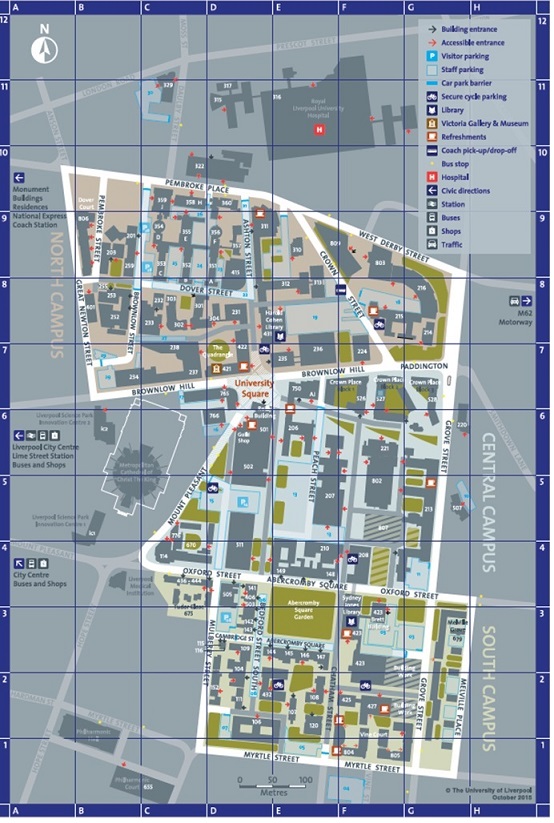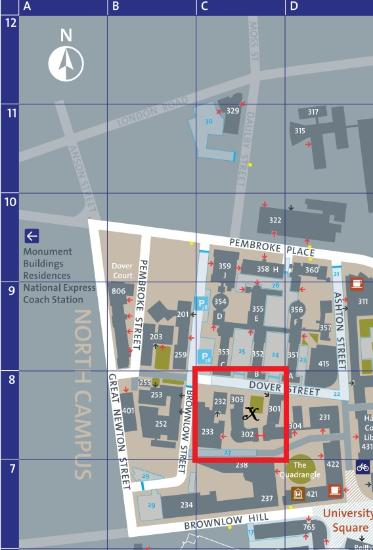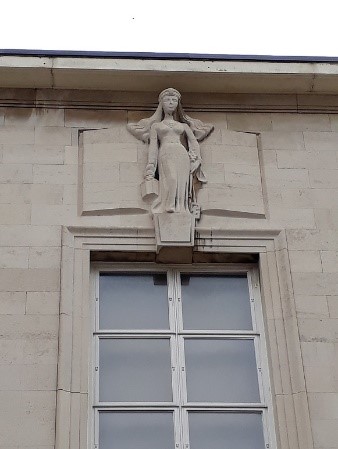Sculpture Walking Tour
Our Sculpture Walking tour app is currently undergoing maintenance and is temporarily unavailable but you can follow the map below.
Follow the campus map
Smartphones and tablets not for you? Don't worry - we also have the campus map version for you to follow below.
The VG&M building icon will always be on the snippet view map above each sculpture so that you can orientate yourself and follow the trail. A full map of campus will be at the bottom of this page.
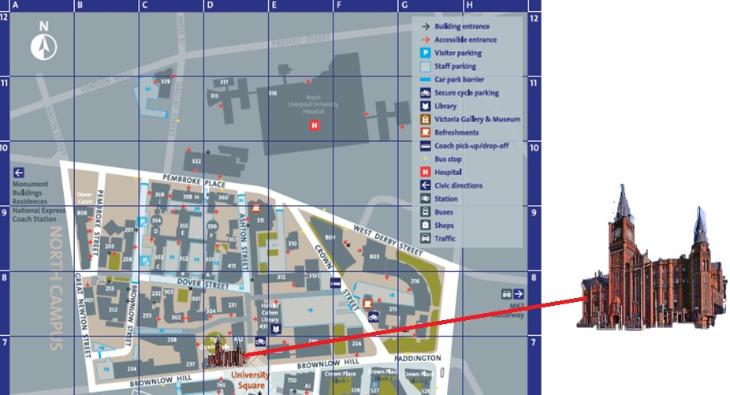
We begin in the quadrangle behind the VG&M with our first sculpture on the Ashton Building...
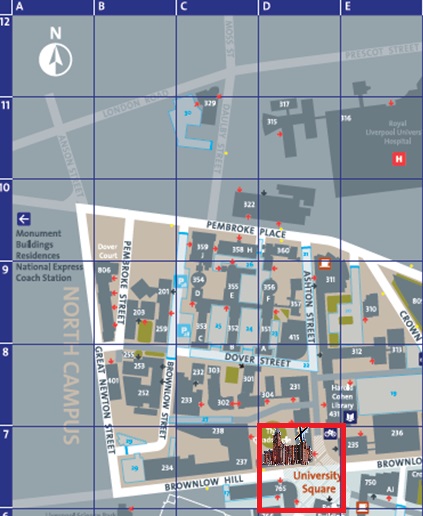
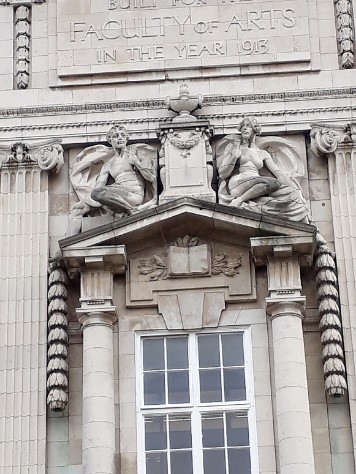
Figures, 1912 - 1914
By William Birnie Rhind (1852 – 1933)
Rhind was a Scottish-based sculptor who rarely worked beyond the border but he twice made an exception for Liverpool. His sculpture on the façade of the Liverpool Cottage Exchange no longer exists, so these are the only remaining examples. They are typical of his elegant Neoclassical style and are allegorical figures representing the arts.
Our next sculpture is also in the quadrangle, just beyond the grass between the Johnston and George Holt Buildings.
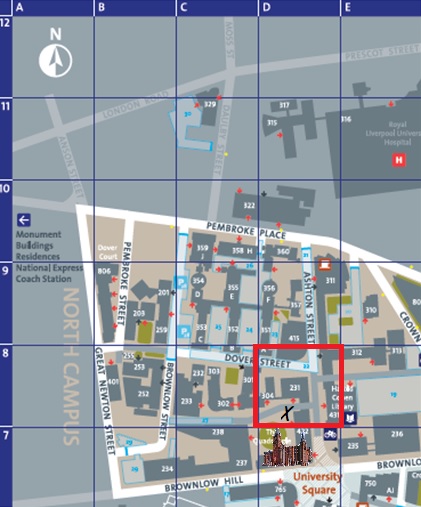
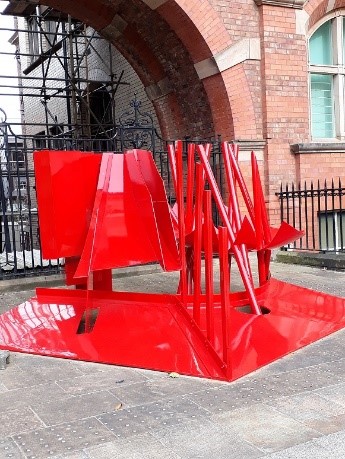
Red Between, 1971 - 1973
By Philip King (1934 -2021 )
King was an abstract sculptor who studied under Anthony Caro and was an assistant to Henry Moore. Red Between was created while the artist was re-thinking his way of working. Originally, the forms were low on the ground. King had a two year pause and when he returned to the sculpture he decided to raise the forms off the ground. He felt the space around it added dynamism.
We now move to the left of The Red between and across to map reference C8
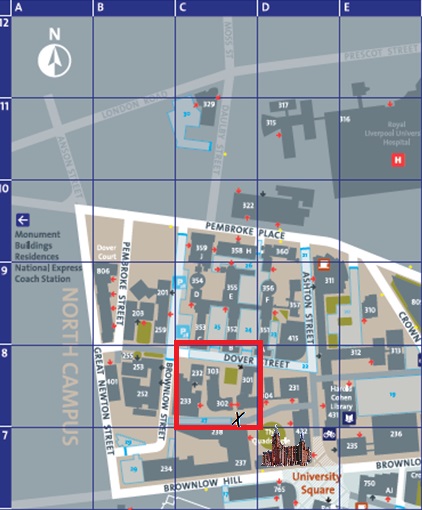
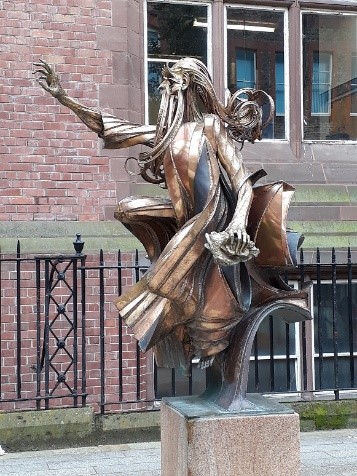
Shemaiah, c.1985
By Sean Rice (1931 – 1997)
Walking down the road and in the same reference square is our next location on the side of the Brodie Tower building (look up!)
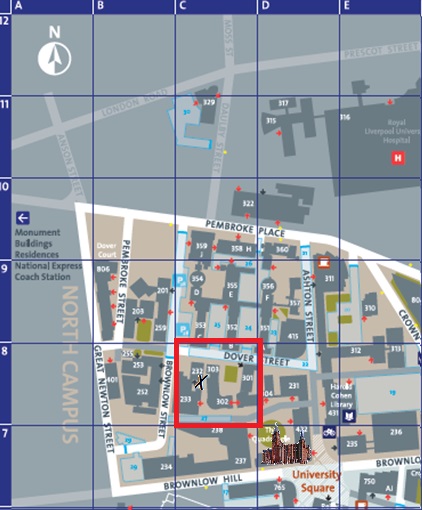
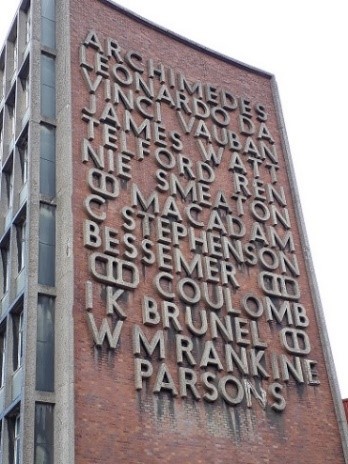
Lettering, 1960
By Maxwell Fry OBE (1899 – 1987)
Map Ref C8
The names of famous engineers are displayed in pre-cast concrete on a curved wall for added impact. Maxwell Fry is regarded as the father of the Modern movement in architecture in Britain and he believed that buildings should be carefully matched to their environment. Born in Wallasey, Fry studied at the University’s School of Architecture.
Turn around and go through the archway between the Thompson Yates and Whelan Buildings
Front Runner
By Elisabeth Frink, 1987
Map Reference C8
Elisabeth Frink studied at the Guildford School of Art (1946-1947) and the Chelsea School of Art (1949-1953). She was created a Dame of the British Empire in 1982. She describes this work as a tribute to human rights and that the figure is a man running away from persecution.
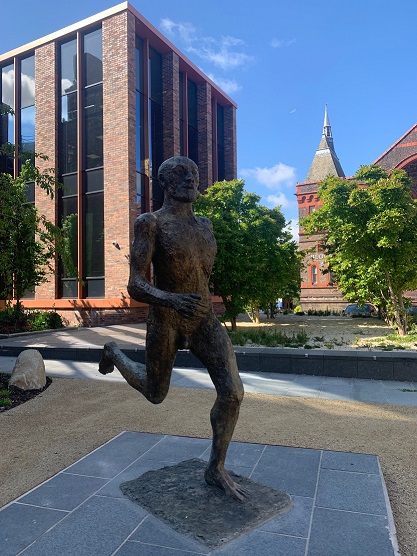
Come back through the archway and walk back towards the VG&M and stop by the archway between the Ashton Building and the George Holt Building. Look up and you will see a pair of sphinxes.
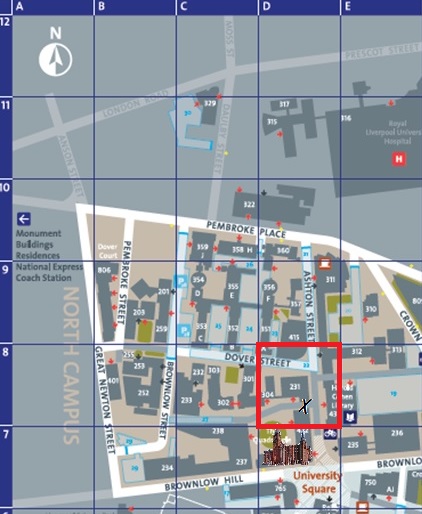
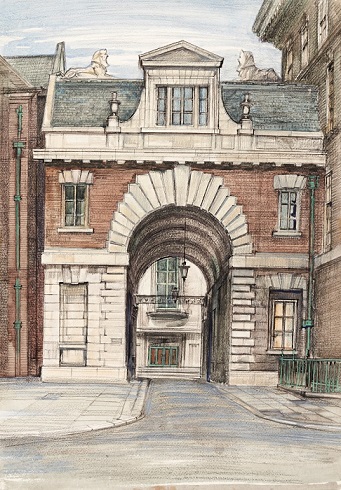
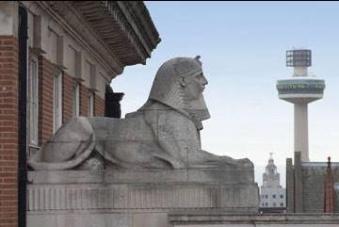
Sphinxes
William Birnie Rhind (1853 – 1933)
Map Ref D8
Although hundreds of people walk through this archway every day, not many look up to see the pair of sphinxes perched on top. Mythical creatures with a human head and a lion’s body, they appear in several classical civilizations including ancient Egypt where they usually represent protection from evil.
Go through the archway and you will see the Harold Cohen Library on the other side of the archway, once again look up over the entrance to the library, map reference D8.
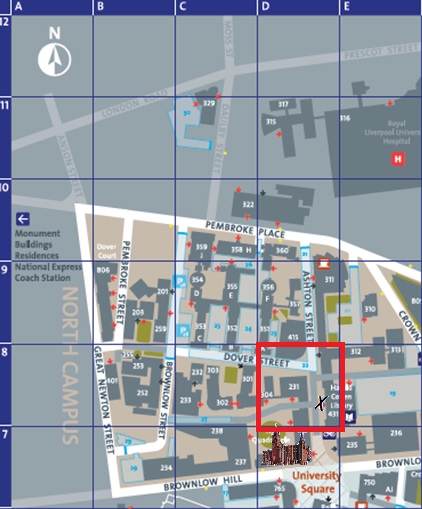
Learning, 1938
By Eric Kennington (1888 – 1960)
You are now heading for the next sculpture in West Derby Street, between the William Henry Duncan and Ronald Ross Buildings (Ref F9).
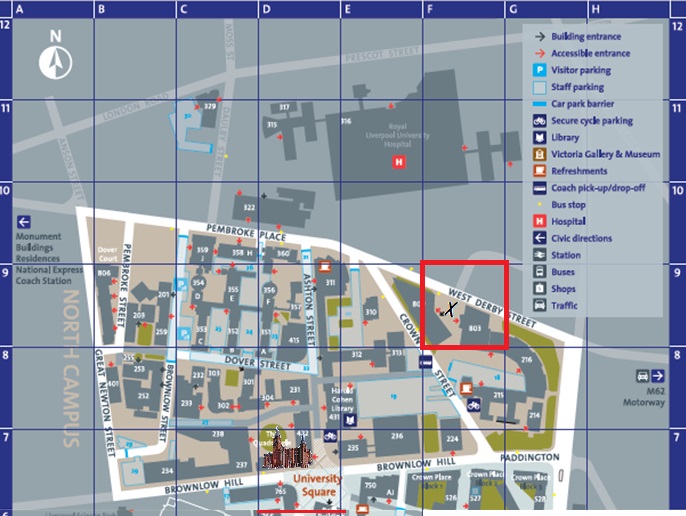
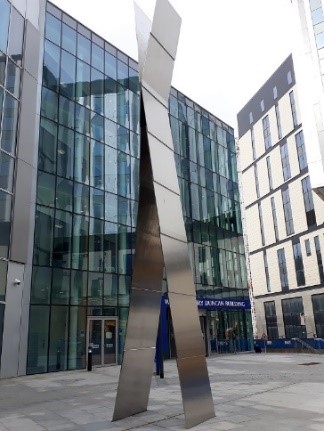
Form A, 2017
By Susan Forsyth (1961 - )
Map Ref F9
Pass the sculpture and go between the Ronald Ross and William Henry Duncan Buildings and head towards University Square and the road that divides the University of Livepool Student Guild and Mathematcs building (Map Ref E6).
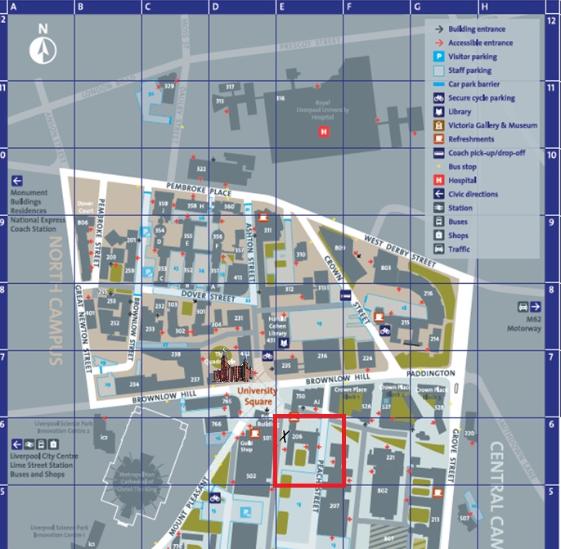
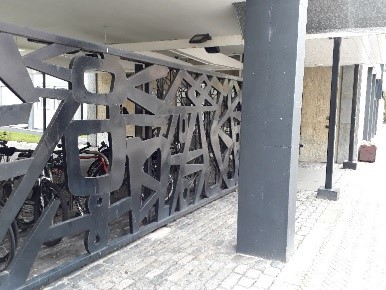
Open Metal Gatework & Screen, 1961
By John McCarthy
Walk between the maths building and the Careers hub (on University Square) and head over to the outside of the Central Teaching Hub and look at the outside of the building.
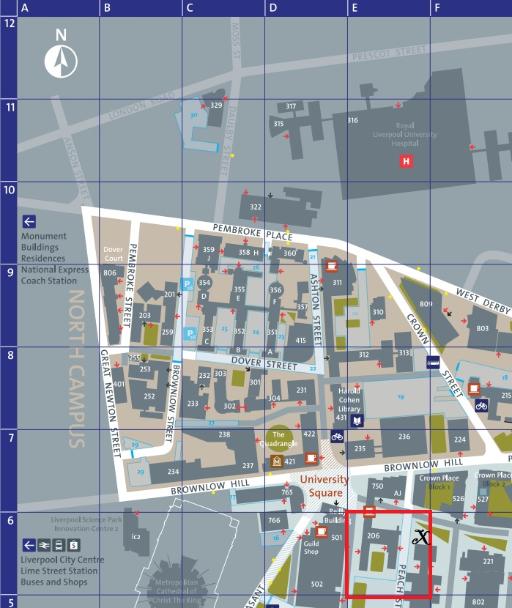
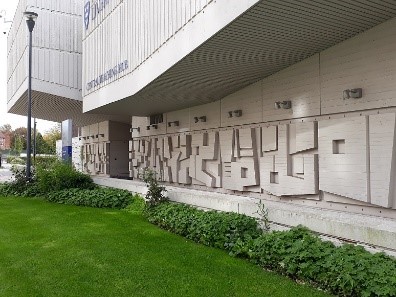
Abstract Frieze, c.1965
Sculptor Frederick Bushe OBE (1931 – 2009)
Go down the side of this building and just outside the Central Teaching Labs is our next sculpture, opposite the Chadwick Building.
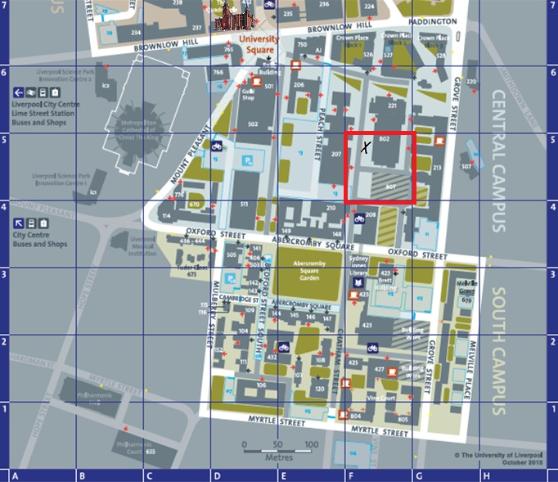
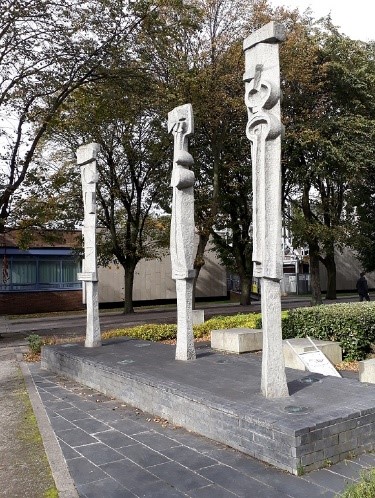
Three Uprights, 1959
By Hubert Dalwood (1924 – 1976)
Map Ref F5/6
The three forms can be seen as three talking figures. The artist considered two forms would have been too few and four too many. Dalwood won a competition to design this piece, which is cast in aluminium. He was one of the leading British artists of his time and taught at several institutions including the Royal College of Art. This piece was installed in 1959, the year Dalwood won the John Moores prize with Large Object.
Continue down this road and go over the crossing and enter Abercromby Square, your next sculpture is just over the crossing outside the Sydney Jones Library on a plinth.
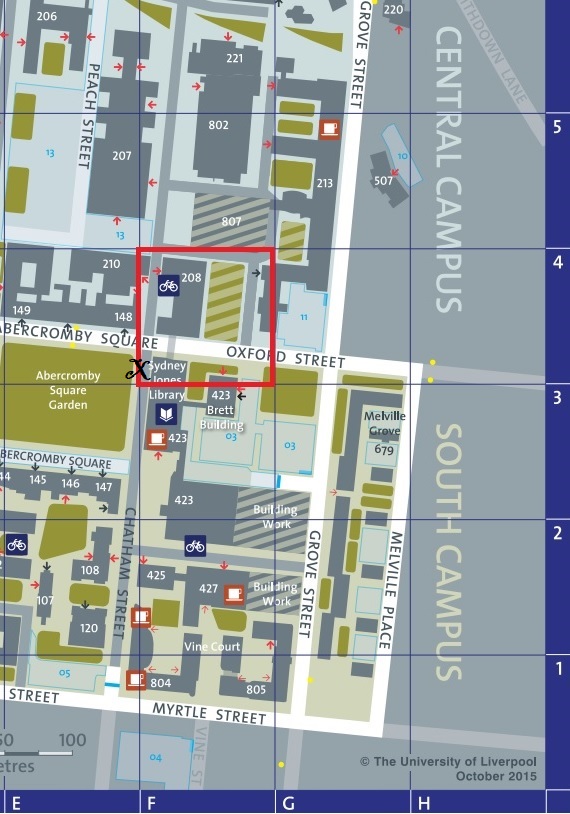
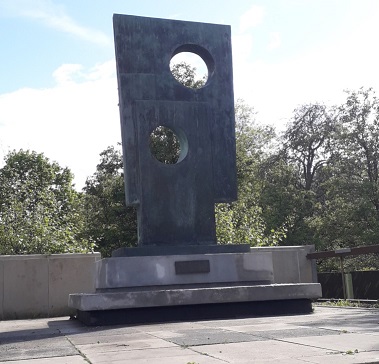
Square with Two Circles, 1964
By Dame Barbara Hepworth (1903 – 1975)
opposite you is a gate leading into Abercromby Square park. Enter from the side gate and the next sculpture will be on the floor to your right, map reference E4.
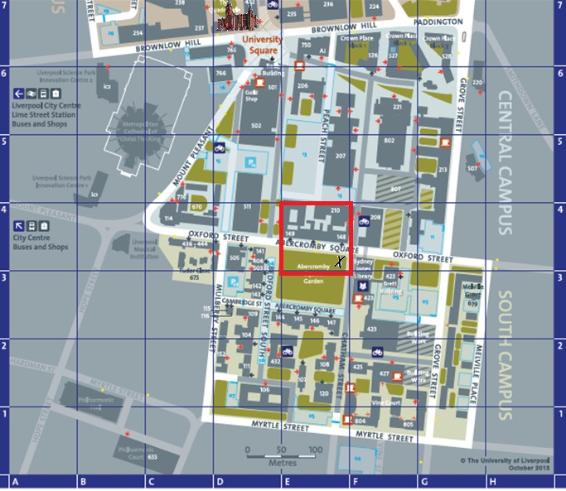
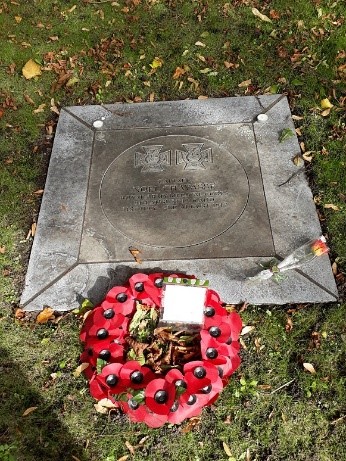
Centenary Victoria Cross Stone, 2017
Cut across Abercomy Square to the other side and you will find our last sculpture.
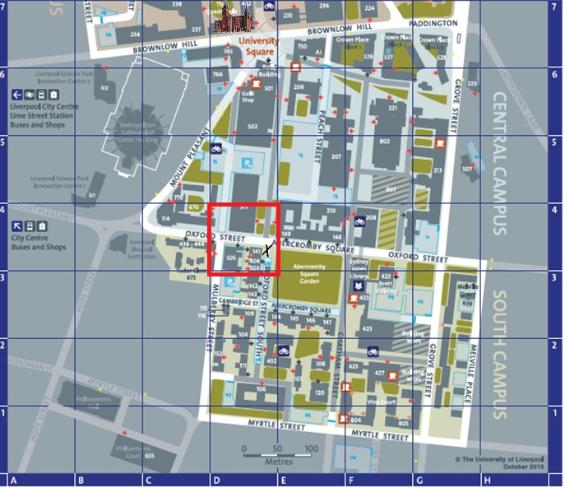
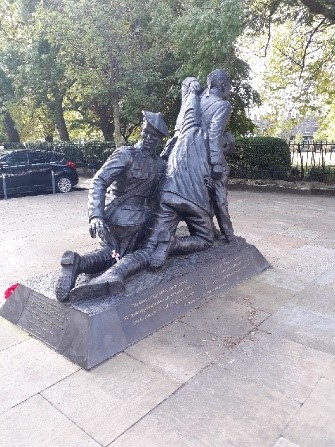
Liverpool Heroes Memorial Statue, 2008
By Tom Murphy (1949 - )
1917 and was the only man to be awarded the equivalent of two Victoria Crosses
during World War One. The memorial also names fifteen further Victoria Cross recipients who were born in
Liverpool. Its creator, Tom Murphy, is one of Britain’s leading monumental sculptors whose work includes the Hillsborough Memorial and statues of Bill Shankly at Anfield and John Lennon at the airport.
You have now successfully completed the Campus Walking Tour.
More sculptures may be added or removed over time due to building works and new commissions, please check back regularly for updates.
